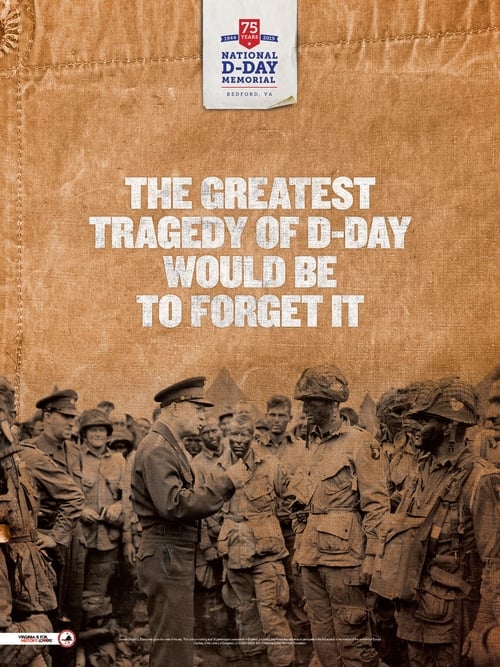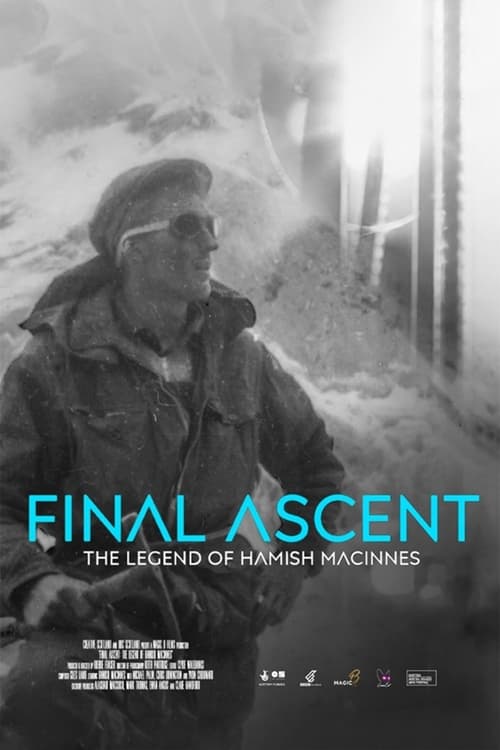
Ask Your Own Question
What is the plot?
The commemoration of D-Day's 75th anniversary unfolds on a solemn morning, June 6, 2019, weaving together the voices of history with the living memories of those who survived the harrowing events of June 6, 1944. The scene opens with stirring music and applause, as crowds gather at Southsea Common in Portsmouth and other significant sites across Normandy, setting a reverent tone for the day's tribute.
The event begins with the sound of a lone piper playing a lament at dawn on the remnants of the Mulberry Harbour at Arromanches, the temporary artificial port that once symbolized Allied ingenuity and hope. The haunting notes of the Highland Laddie echo across the beach, where thousands of Allied troops first set foot on enemy-held soil 75 years earlier. The crowd is hushed, the weight of history palpable as the first British soldier's landing is commemorated.
Veterans take the stage, their faces etched with the passage of time but their voices clear and unwavering. One soldier recalls the terrifying moment he became the "second one on the beach," stepping off the landing craft into a maelstrom of gunfire and chaos. "They said we're going to give you live ammunition. This is the real thing," he says, his voice trembling with the memory of sudden violence. "I was never brought up to go killing people." His words hang in the air, a stark reminder of the brutal reality behind the heroic narratives.
Signalman Frank Baugh, now 95 years old, recounts the horror he witnessed at Sword Beach. "We had been talking to them minutes before they were cut down with machine gun fire," he says, his eyes distant as he remembers comrades falling face down into the water, their lives extinguished before help could reach them. "We couldn't get them out." His emotional speech ends with a salute, a silent tribute to those who paid the ultimate price.
The narrative shifts to the strategic and technological feats that underpinned the invasion. The HMS Ballona, a light anti-aircraft cruiser, is highlighted as part of the naval support that shielded the landing forces from German air attacks. Veterans describe the confusion and fear aboard ships as smoke and explosions cloud the horizon, unaware at first of the ferocity of the German defense.
Lieutenant Colonel Merritt emerges as a figure of resilience and leadership amid the chaos. Twice wounded, he refuses to abandon his post, continuing to direct his unit's operations with "great vigor and determination." Despite his injuries, he calmly organizes a defensive position with Bren and Tommy guns, covering the withdrawal from the beach. His final known act is one of defiance and courage before he is taken prisoner of war. His story embodies the grit and sacrifice of countless officers and soldiers whose names remain less known but whose actions shaped the battle's outcome.
The event does not dramatize combat scenes but conveys the intensity of the fighting through firsthand accounts and historical data. The staggering toll is laid bare: 4,414 Allied troops killed on D-Day alone, including 2,501 Americans, with thousands more wounded. The losses at Sword Beach, Omaha, Juno, Gold, and Utah beaches are recounted with solemn respect, each death a testament to the ferocity of the German defenses and the bravery of the invaders.
As the day progresses, the ceremony moves to Bayeux Cemetery, where veterans, dignitaries, and families gather to honor the fallen. The British Normandy Memorial at Ver-sur-Mer is inaugurated, its imposing structure overlooking Gold Beach, a permanent testament to the 22,442 British servicemen who died during the Normandy campaign. French President Emmanuel Macron and Queen Elizabeth II's representative Mrs. May pay their respects, underscoring the enduring alliance forged in blood and sacrifice.
Throughout the event, the narrative is punctuated by musical performances and theatrical readings that bring to life the emotional landscape of D-Day. The testimonies reveal not only the horrors of war but also the camaraderie, fear, and determination that defined the soldiers' experience. The secrecy surrounding the operation is emphasized, highlighting the immense planning and technological innovation required to launch such a vast and complex assault.
The climax of the tribute arrives as the sun sets over the Normandy coast. A moment of silence is observed, broken only by the soft notes of a bugle playing the Last Post. Veterans stand together, some with tears, others with stoic pride, united in remembrance. The final scenes show crowds saluting, flowers laid on graves, and the British Normandy Memorial bathed in the fading light--a solemn promise that the sacrifices of June 6, 1944, will never be forgotten.
No fictional characters survive or perish because this is not a dramatized narrative but a living history event. The deaths recounted are those of real soldiers, their names etched in memorials and their stories preserved through testimony. The event closes without a traditional resolution but with a powerful collective commitment to honor and remember the heroes of D-Day, ensuring their legacy endures for generations.
In this way, "D-Day 75: A Tribute to Heroes (2019)" unfolds as a moving, comprehensive homage to courage, sacrifice, and the unyielding spirit of those who fought on the beaches of Normandy, bringing history vividly to life through the voices of those who lived it and the memorials that keep their memory alive.
More Movies Like This
Browse All Movies →
What is the ending?
In the ending of "D-Day 75: A Tribute to Heroes," the film culminates in a poignant ceremony commemorating the sacrifices made during the D-Day landings. Veterans reflect on their experiences, sharing emotional stories that highlight their bravery and the bonds formed during the war. The film concludes with a sense of honor and remembrance, emphasizing the importance of acknowledging the past and the heroes who fought for freedom.
As the final scenes unfold, the camera captures the serene beauty of the Normandy beaches, juxtaposed with the somber memories of the veterans. The ceremony is filled with tributes, speeches, and moments of silence, allowing the audience to feel the weight of history and the personal stories behind it. The film closes with a powerful message about the enduring legacy of those who served, urging viewers to remember and honor their sacrifices.
As the film approaches its conclusion, the scene transitions to the Normandy beaches, where a solemn ceremony is set to take place. The sun begins to set, casting a golden hue over the landscape, a stark contrast to the dark memories of the past. Veterans, now aged and frail, gather at the site where they once stormed the beaches, their faces etched with the lines of time and experience.
The camera pans across the crowd, capturing the emotional weight of the moment. Each veteran carries their own story, their eyes reflecting a mixture of pride and sorrow. As they stand together, a sense of camaraderie fills the air, a bond forged in the fires of conflict. The audience can feel the gravity of their shared history, the sacrifices made, and the lives lost.
The ceremony begins with a series of speeches, each veteran taking turns to share their experiences. One veteran recounts the chaos of the landing, the sounds of gunfire, and the sight of fallen comrades. His voice trembles with emotion as he speaks of the friends he lost, the memories that haunt him, and the determination that drove him forward. The audience listens intently, the silence punctuated only by the sound of the waves crashing against the shore.
Another veteran shares a story of bravery, highlighting the heroism of his fellow soldiers. He speaks of the bonds formed in the trenches, the laughter shared amidst the horrors of war, and the unwavering spirit that kept them going. His words resonate deeply, reminding everyone present of the humanity that persists even in the darkest of times.
As the ceremony progresses, a moment of silence is observed, allowing everyone to reflect on the sacrifices made. The camera captures the solemn expressions of the veterans, their eyes glistening with tears as they remember their fallen brothers. The weight of history hangs heavy in the air, a reminder of the cost of freedom.
The film then shifts to a final tribute, where wreaths are laid at the foot of a memorial. The veterans, with trembling hands, place their wreaths, each one symbolizing a life lost and a promise to remember. The scene is filled with emotion, the camera lingering on the faces of the veterans as they pay their respects.
As the ceremony concludes, the veterans stand together, united in their shared experiences. They look out over the beach, a place that once held terror but now serves as a site of remembrance and honor. The sun sets behind them, casting a warm glow that signifies hope and healing.
In the final moments, the film emphasizes the importance of remembrance. The screen fades to black, and a message appears, urging viewers to honor the sacrifices of those who fought for freedom. The legacy of the veterans lives on, a testament to their bravery and the enduring spirit of humanity. The film closes with a sense of closure, yet the stories of the veterans linger, reminding us of the past and the heroes who shaped our world.
Is there a post-credit scene?
"D-Day 75: A Tribute to Heroes" does not feature a post-credit scene. The film is a documentary that focuses on the events of D-Day during World War II, commemorating the bravery and sacrifices of the soldiers who participated in the Normandy landings. It includes interviews, archival footage, and personal stories from veterans, emphasizing the emotional weight of their experiences and the historical significance of the day. The film concludes with a reflective tone, honoring the legacy of those who fought, rather than setting up any additional scenes or narratives typical of fictional films.
What specific events are depicted in the film related to the D-Day landings?
The film meticulously portrays the harrowing events of June 6, 1944, focusing on the Allied forces' strategic planning and execution of the landings at Normandy. It highlights the intense combat faced by soldiers as they stormed the beaches, the chaos of battle, and the bravery displayed by individuals in the face of overwhelming odds.
Which historical figures are featured in D-Day 75, and what roles do they play?
The film features several historical figures, including General Dwight D. Eisenhower, who is depicted as the Supreme Commander of the Allied Expeditionary Force, orchestrating the invasion. Other notable figures include General Bernard Montgomery, who led the ground forces, and various soldiers whose personal stories are interwoven to illustrate the human experience of the invasion.
How does the film portray the experiences of individual soldiers during the invasion?
D-Day 75 delves into the personal stories of soldiers from different backgrounds, showcasing their fears, hopes, and motivations. The film captures their emotional states as they prepare for battle, the camaraderie among troops, and the devastating impact of loss and injury, providing a deeply human perspective on the historical event.
What specific challenges do the Allied forces face during the landings as depicted in the film?
The film illustrates numerous challenges faced by the Allied forces, including rough seas, fortified German defenses, and the element of surprise. It depicts the logistical difficulties of landing troops and equipment on the beaches, the high casualty rates, and the psychological toll on soldiers as they confront the brutal realities of war.
Are there any personal stories or testimonials included in the film, and how do they enhance the narrative?
Yes, D-Day 75 incorporates personal stories and testimonials from veterans who participated in the invasion. These narratives provide a poignant and authentic connection to the events, enhancing the emotional weight of the film as viewers hear firsthand accounts of bravery, sacrifice, and the lasting impact of the war on their lives.
Is this family friendly?
"D-Day 75: A Tribute to Heroes" is a documentary that commemorates the 75th anniversary of the D-Day landings during World War II. As a historical tribute, it features real footage, interviews, and accounts from veterans, which may include some intense and emotional content.
Potentially objectionable or upsetting aspects for children or sensitive viewers may include:
-
Graphic War Footage: The documentary includes archival footage of the D-Day landings, which may depict the chaos and violence of war, including scenes of soldiers in combat and the aftermath of battles.
-
Emotional Testimonies: Veterans share their personal experiences and memories, which can be deeply moving and may evoke feelings of sadness or distress as they recount loss and trauma.
-
Discussion of Death and Sacrifice: The film addresses the heavy toll of war, including the loss of life and the sacrifices made by soldiers, which may be difficult for younger viewers to process.
-
Historical Context of War: The documentary discusses the broader implications of World War II, including the suffering endured by soldiers and civilians, which may be upsetting for some viewers.
Overall, while the film serves as a tribute to heroism and sacrifice, its content may require parental guidance for younger audiences or those who are particularly sensitive to themes of war and loss.
































